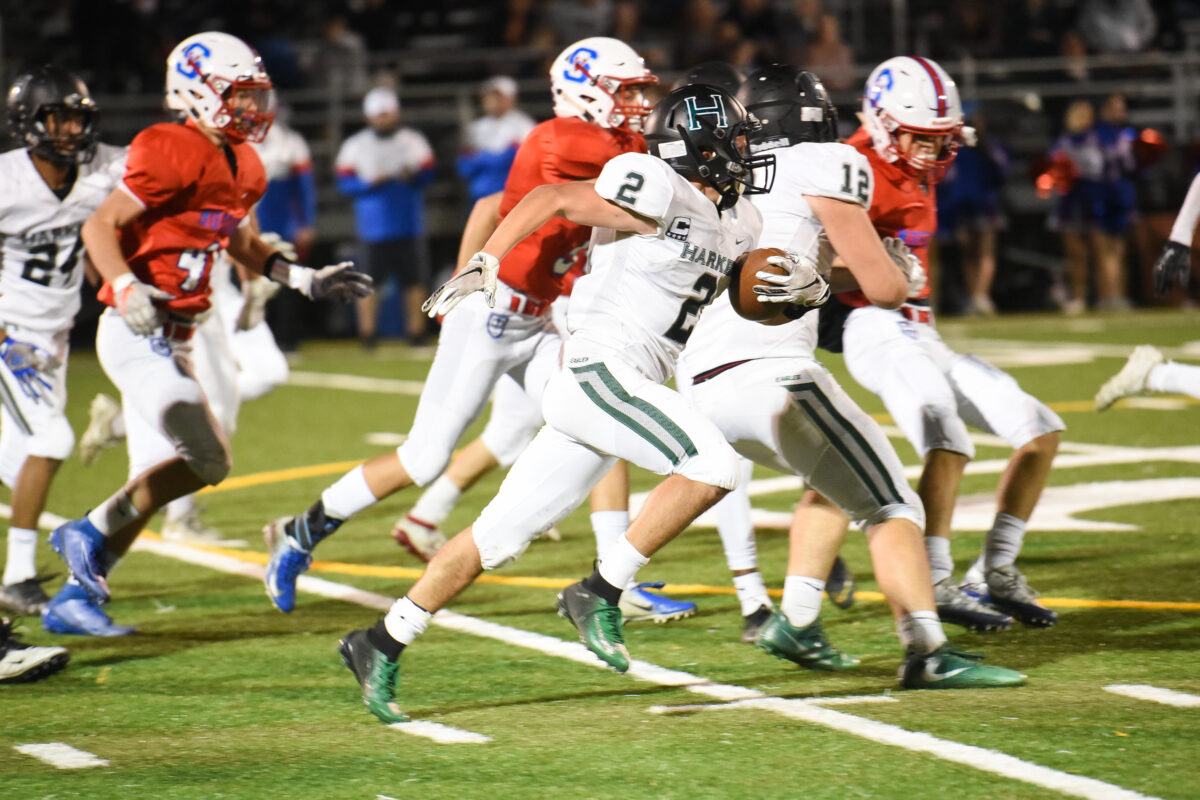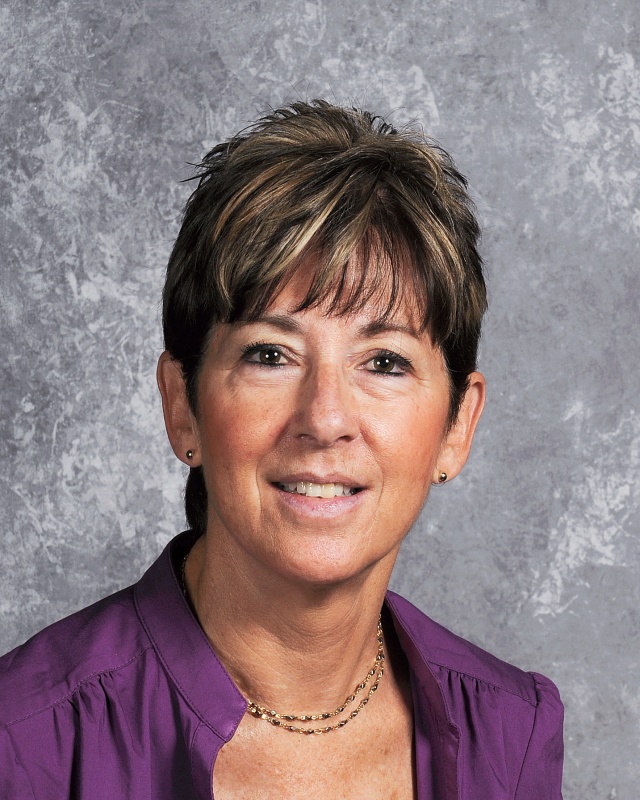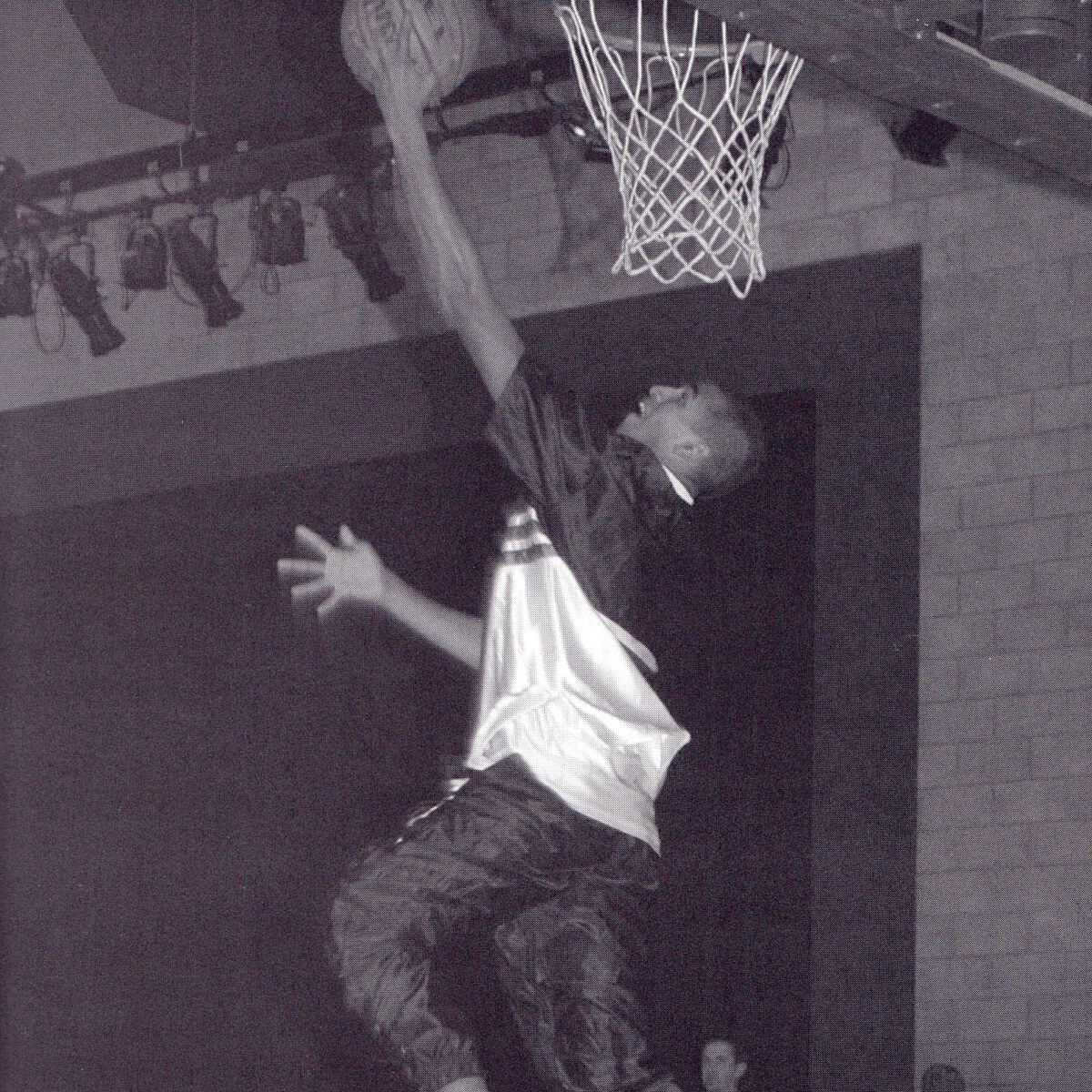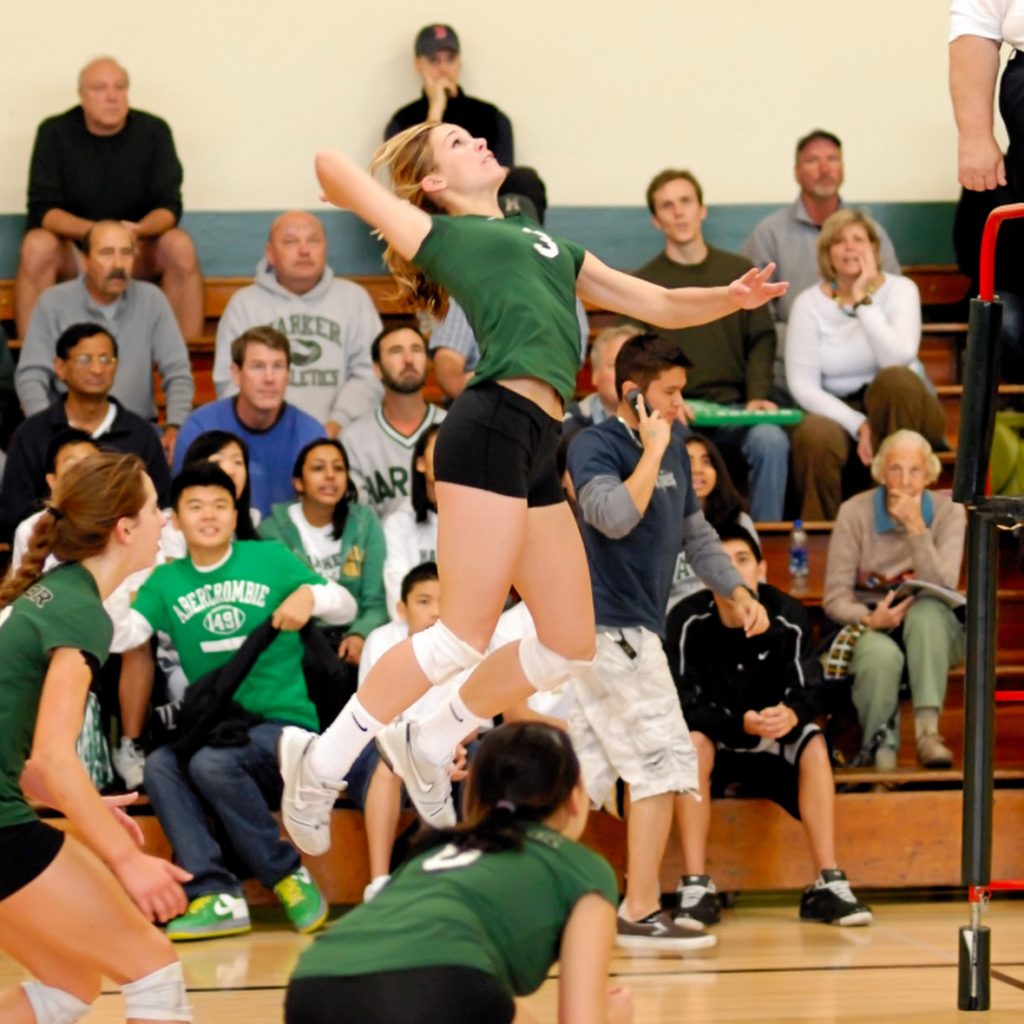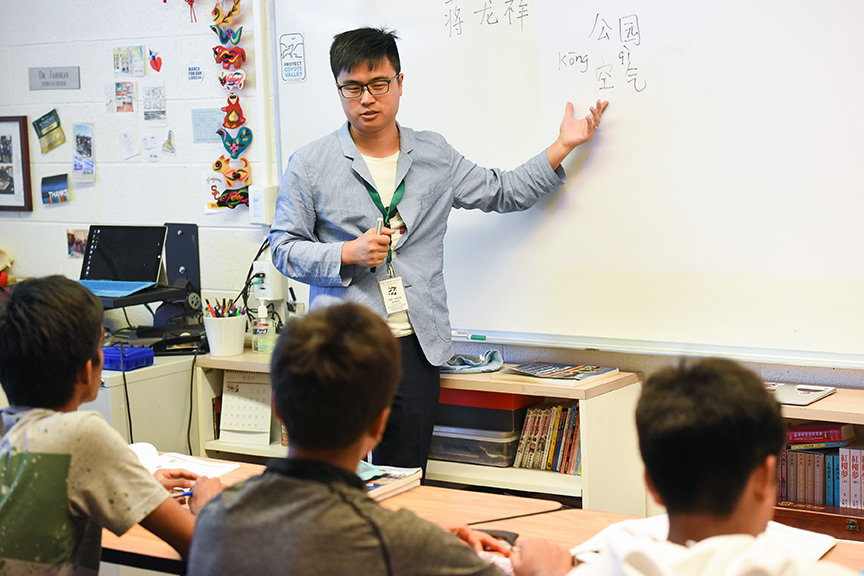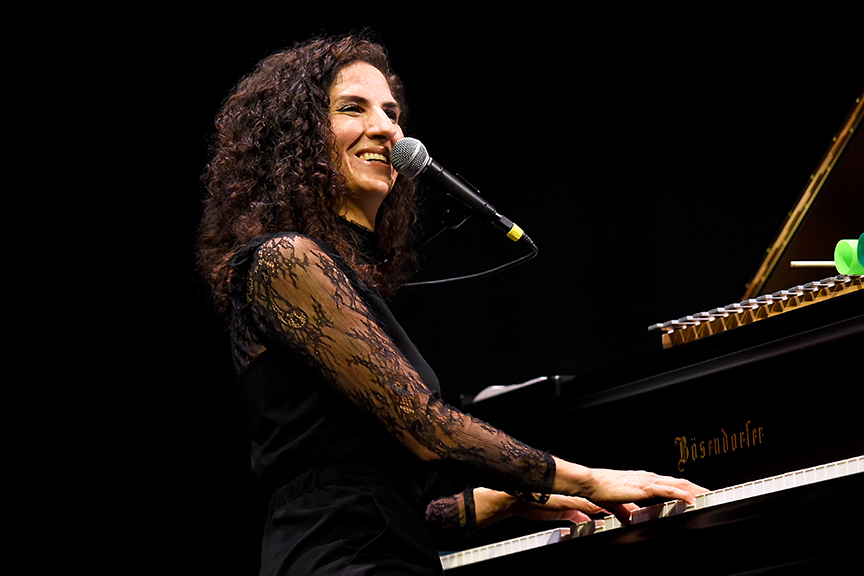The Harker community showed up in the hundreds for Saturday night’s Homecoming to enjoy company with friends and family, sample a variety of foods and cheer on the Eagles, who took on the Saint Vincent de Paul Mustangs.
Schoolwide
Maverick McNealy ’13 inducted into Harker’s Athletic Hall of Fame
Maverick McNealy ’13 gave notice early on that he would be a force on the Harker golf team and his outstanding play and conversion to a pro put him front and center to be inducted into Harker’s Athletic Hall of Fame this Saturday before the Homecoming game.
Chris Collins, athletic department stalwart, named to Athletic Hall of Fame
Chris Collins started with Harker in 2001 as assistant to the dean of students and the athletic director. In 2008 Collins moved exclusively to the athletic department and to celebrate her dedication and hard work, Collins will be inducted into Harker’s Athletic Hall of Fame this Saturday before the homecoming game.
Adhir Ravipati ’05 inducted into Harker’s Athletic Hall of Fame
Adhir Ravipati ’05 played four sports his senior year and was named Harker’s most valuable player in three of the sports and earned all-league placement in each, sealing his entry into Harker’s Athletic Hall of Fame.
Kristina (Bither) Gurney ’09 inducted into Harker’s Athletic Hall of Fame
Kristina (Bither) Gurney ’09, a Harker Lifer, was a force to be reckoned with on the court and on the pitch, and she will be inducted into Harker’s Athletic Hall of Fame this Saturday before the Homecoming game.
Harker community enjoys a sweet, fun-filled day at Family & Alumni Picnic
This year’s Family & Alumni Picnic brought hundreds of members of the Harker community to the lower school campus to enjoy games, food, student performances and more.
